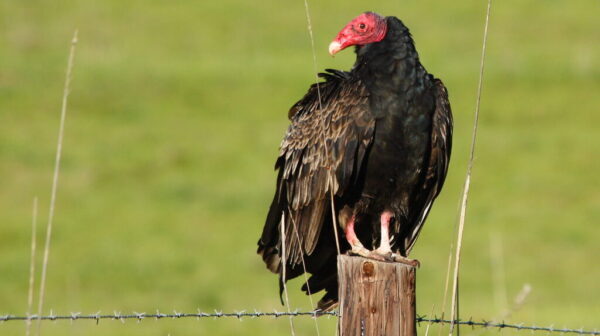Turkey vultures (Cathartes aura) are large birds of prey found throughout the Americas. They are part of the family Cathartidae, which also includes condors and other New World vultures. These birds have long wings and distinctive red heads, making them easy to identify in the sky.
Physical Traits
Turkey vultures can reach up to 3 feet in length with a wingspan of 6-7 feet. They have dark brown feathers on their backs and wings, while their undersides are lighter in color. The most distinguishing feature is their bald red head, which is used to regulate body temperature and keep it cool during flight.
Life Span
The average life span of a turkey vulture is between 15-20 years in the wild. In captivity, they can live up to 30 years or more with proper care.
Habitat
Turkey vultures inhabit open areas such as grasslands, deserts, and savannas across North and South America from southern Canada to the tip of South America. They prefer areas with plenty of carrion for food sources and roosting sites such as trees or cliffs for protection from predators.
Diet
Turkey vultures are scavengers that feed mainly on carrion such as dead animals or fish left behind by other predators. They also eat insects, eggs, fruits, vegetables, and small vertebrates when available.
Reproduction
Turkey vultures breed in late spring or early summer depending on location. The female lays two eggs per clutch which hatch after about five weeks of incubation by both parents. The chicks fledge after 8-10 weeks but remain dependent on their parents for several months until they can hunt for food on their own.
Conservation Status
The turkey vulture is listed as the Least Concern by the IUCN Red List due to its wide range and stable population numbers across its range. However, habitat destruction due to human activity is still a threat to these birds’ survival in some areas.
Interesting Facts
- Turkey vultures have an excellent sense of smell which helps them find food sources from miles away!
- Unlike other raptors that rely on sight to hunt prey, turkey vultures use thermal air currents called thermals to soar high into the sky without expending much energy!
- Turkey vultures form communal roosts at night where hundreds or even thousands of birds gather together!


